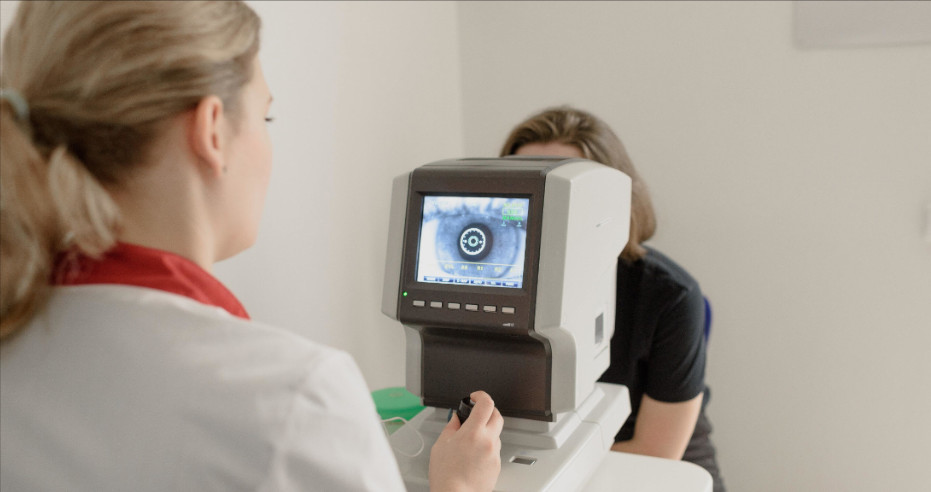What Is Diabetic Retinopathy and How Can It Be Prevented?

What is Diabetic Retinopathy?
Diabetic retinopathy is a condition that affects the eyes, and is a common complication of diabetes. It is caused by damage to the blood vessels of the retina, or the light-sensitive tissue at the back of the eye [1]. Anyone with Type 1 and Type 2 diabetes is susceptible to the condition, and the risk for developing it increases the longer someone has diabetes.
What are the Symptoms?
Initially, diabetic retinopathy presents with either no symptoms or mild vision problems. However, it can lead to blindness. According to the Mayo Clinic, symptoms can include [1]:
- Spots or dark strings floating in your vision (floaters)
- Blurred vision
- Fluctuating vision
- Dark or empty areas in your vision
- Vision loss
If you are diabetic and experiencing any of these symptoms, it’s important to contact your doctor right away and schedule an eye exam.
What are the stages of diabetic retinopathy?
Our eyes have tiny blood vessels in them that nourish the retina. As diabetes progresses, too much sugar in the blood causes those vessels to become blocked and blood flow to the retina decreases. There are two types of retinopathy associated with diabetes [1, 2]: nonproliferative and proliferative.
In nonproliferative diabetic retinopathy (NPDR), which occurs in the early stages of the condition, the walls of the tiny blood vessels in one’s retina weaken, causing fluid and blood to leak into the retina. Larger vessels can also dilate, contributing to vision loss. As more and more blood vessels become blocked, NPDR progresses from mild to severe.
In advanced diabetic retinopathy, also known as proliferative diabetic retinopathy, any damage blood vessels close off and the eyes start to grow new blood vessels in the retina. These vessels are often abnormal and fragile, causing fluid to lead from them and enter into the eye. Over time, scar tissue can cause the retina to detach from the back of the eye. In some cases, pressure builds up in the back of the eye, causing damage to the nerves that carry images from the eye to the brain (this is known as glaucoma).
Identifying Diabetic Retinopathy
Early detection is crucial for a patient’s eye health and is the only way to prevent severe stages of the disease that cause vision loss [2]. Regular screening by healthcare professionals as part of primary care visits are a great way to catch diabetic retinopathy as early as possible. If a primary care provider notices any abnormal problems with the patient’s eyes, they will refer them to a specialist for further examination.
During a comprehensive eye exam, a doctor will look for abnormalities in the inside and outside parts of the eyes. They might also perform further tests that allow them to see damaged or closed blood vessels, as well as how much fluid is in the retina [1].
Can It Be Corrected?
There is no cure for diabetic retinopathy, however there are effective treatments that slow the progression of the disease depending on the severity. It is much more likely that retinopathy can be treated at the early stages.
Most commonly, individuals will work with their doctor to improve their diabetes management and better control their blood sugar. If the condition has progressed to proliferative diabetic retinopathy, treatments can include medications, photocoagulation (laser treatment), and vitrectomy (procedure to remove blood/ scar tissue from the eye) [3].
Ways To Prevent Onset
Research shows that glycemic control is one of the strongest predictors of early worsening of diabetic retinopathy [4]. This means that one of the best ways to prevent vision loss is to carefully manage diabetes and maintain glycemic control. Other ways to reduce the risk of developing retinopathy and other vision problems include:
- Regular Eye Exams: Yearly, preventative exams can help identify problems early on, even if your vision seems unaffected. For pregnant individuals, regular eye exams throughout pregnancy might be recommended as this is a time of increased risk.
- Early Intervention: If you notice any changes in your vision, it is important to bring them up with your healthcare provider so that you can make appropriate changes in lifestyle and health management.
- Maintaining a Healthy Lifestyle: Exercising daily, eating healthy foods, reducing stress levels, and taking any prescribed medications can reduce the risk of developing complications.
- Control Blood Pressure and Cholesterol: If unmanaged, high blood pressure and cholesterol can contribute to faster disease progression.
- Consider Nutritional and Food Therapies: Deficiencies of crucial vitamins and minerals that protect and strengthen the retina, including but not limited to vitamins B1, B2, B6, B12, C, D, and natural vitamin E complex, increase the risk of developing eye-related complications. Research has shown that an optimal combination of vitamins have been used successfully as therapy for diabetic retinopathy [5].
- Consume More Vitamin K: There is new research showing that Vitamin K has protective and restoration properties on diabetic complications such as cataract formation. Increased consumption of Vitamin K could provide improved blood circulation in the eyes, preventing disease progression [6]. Check out our blog post for more information.